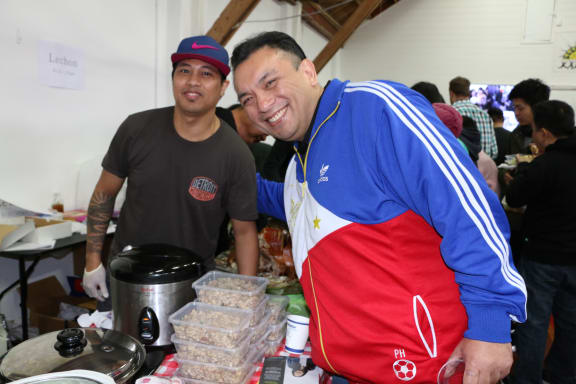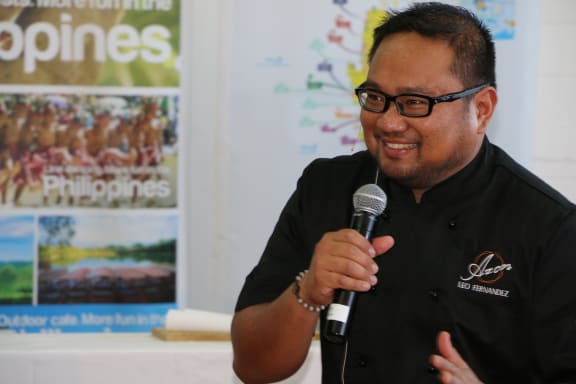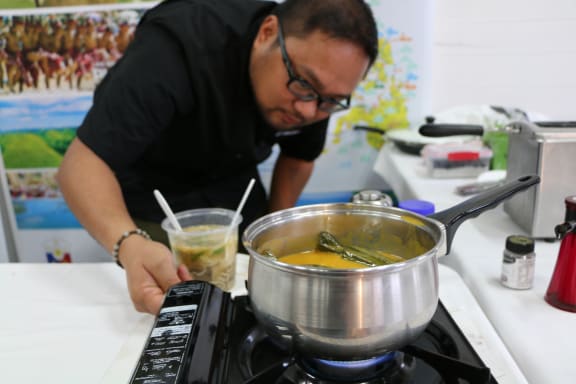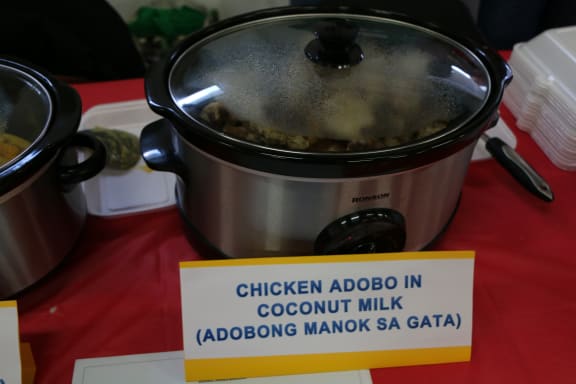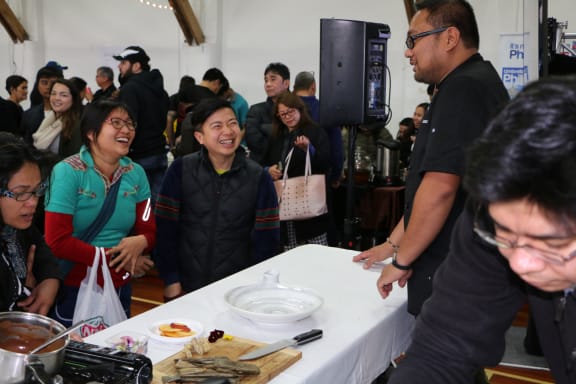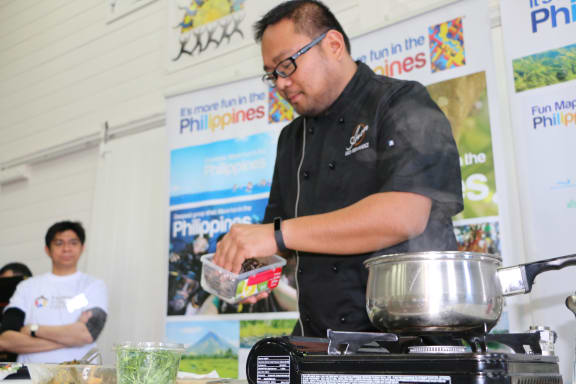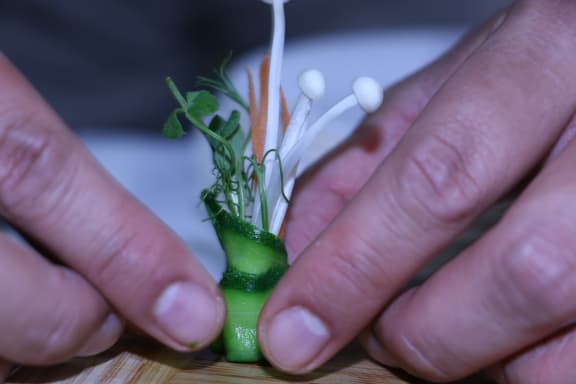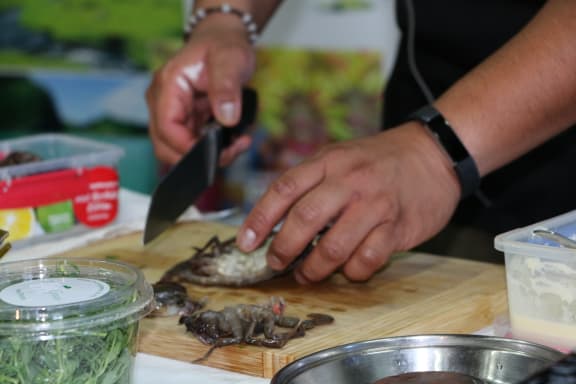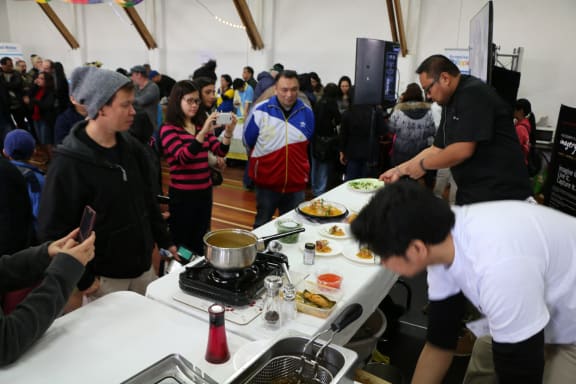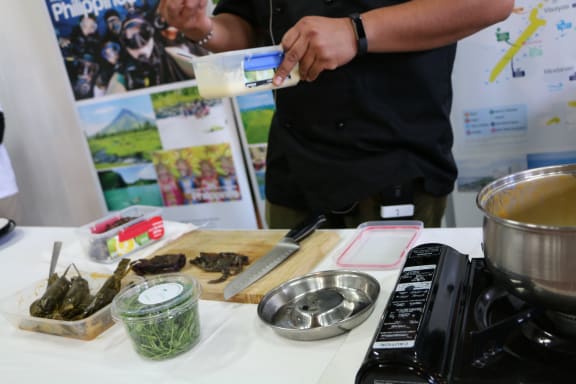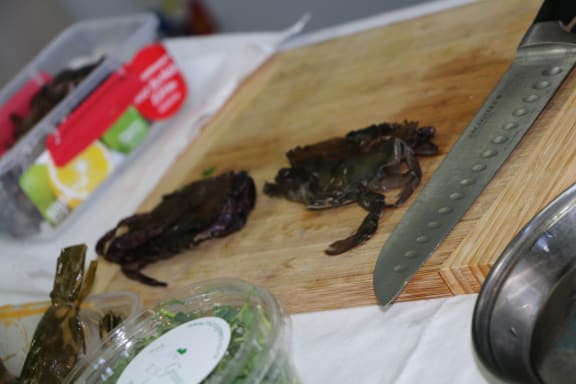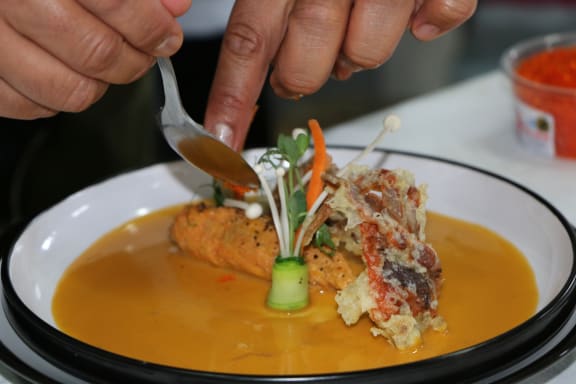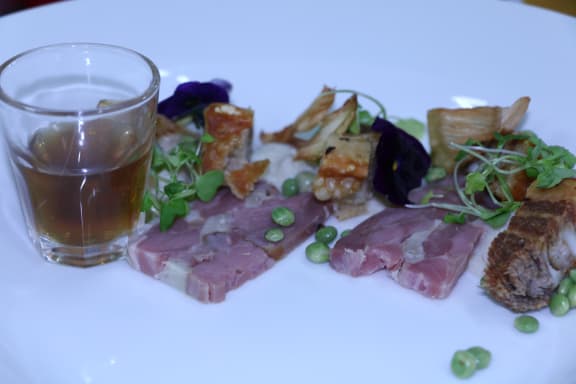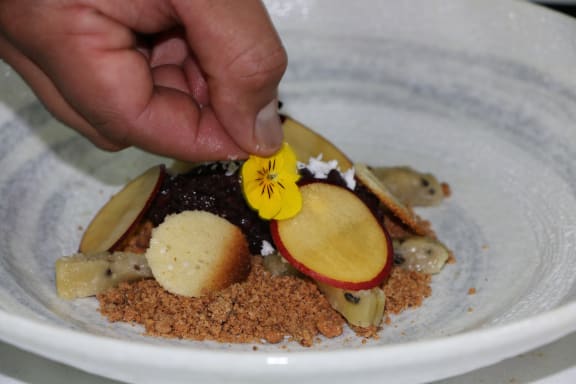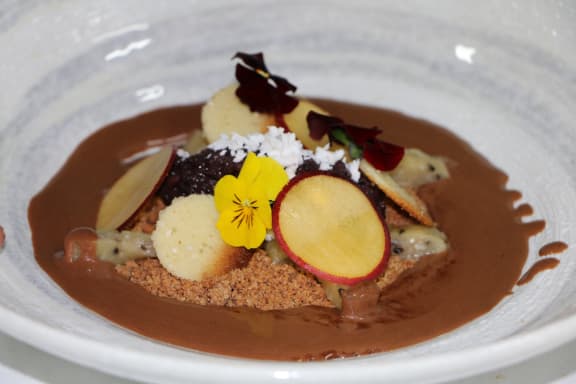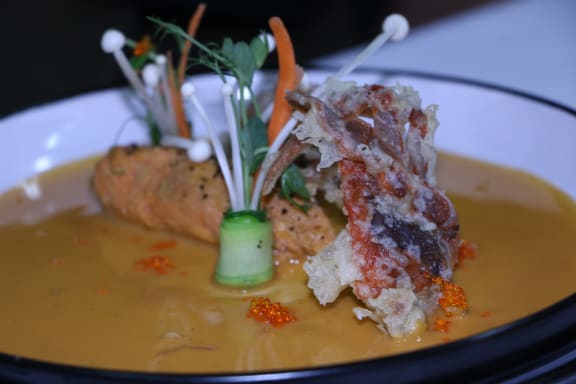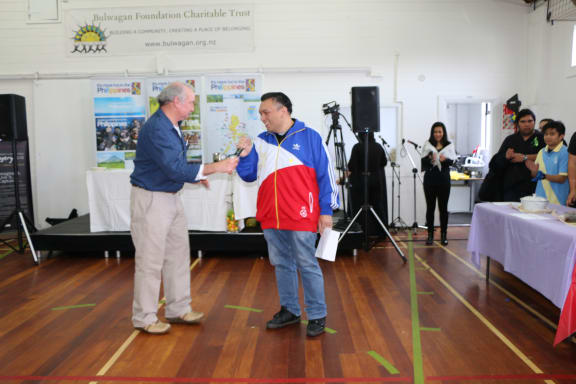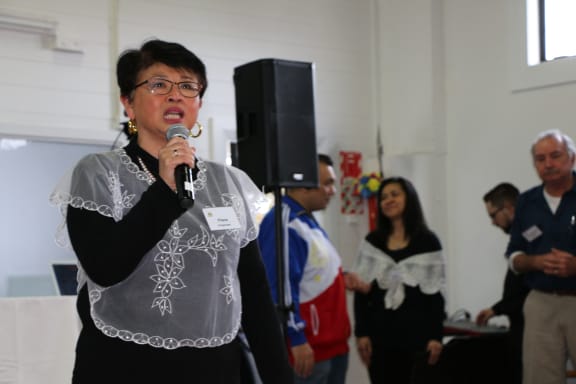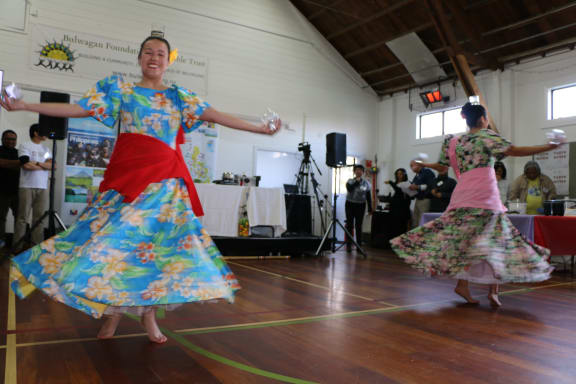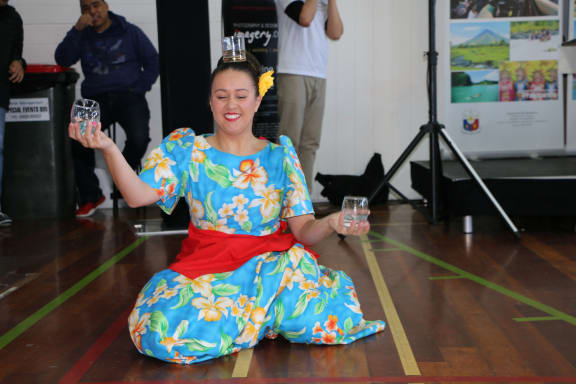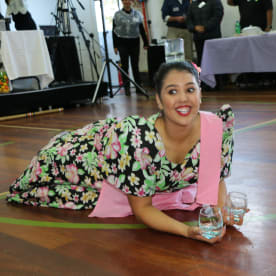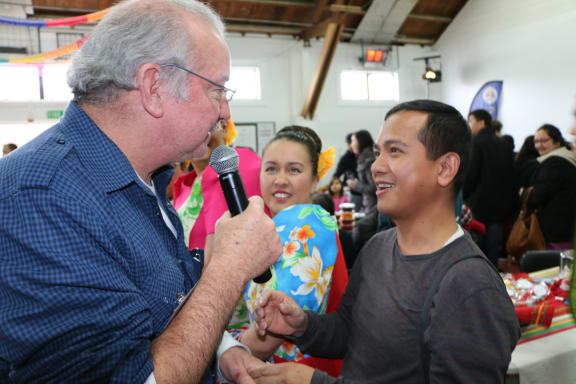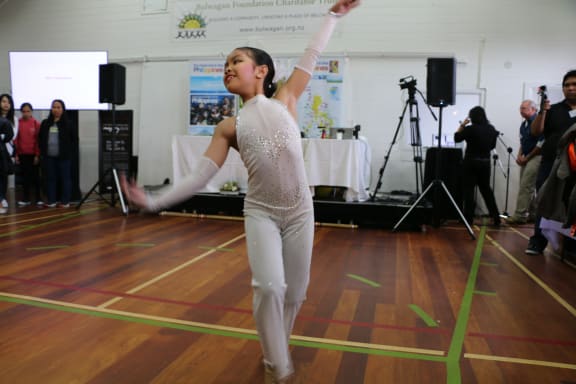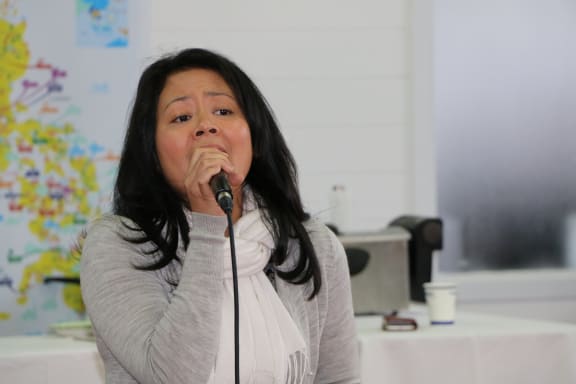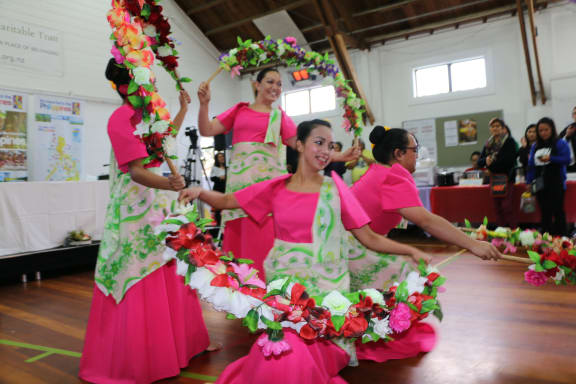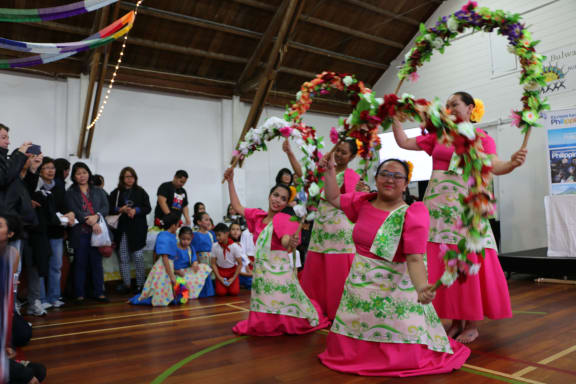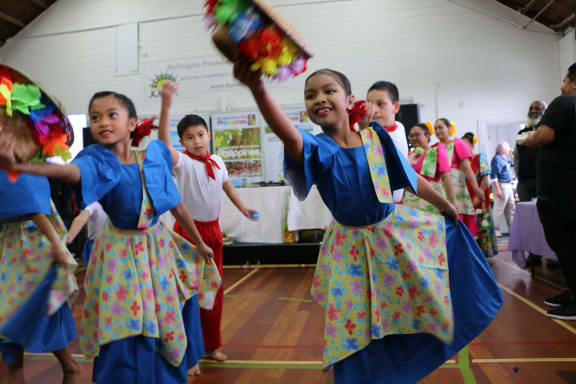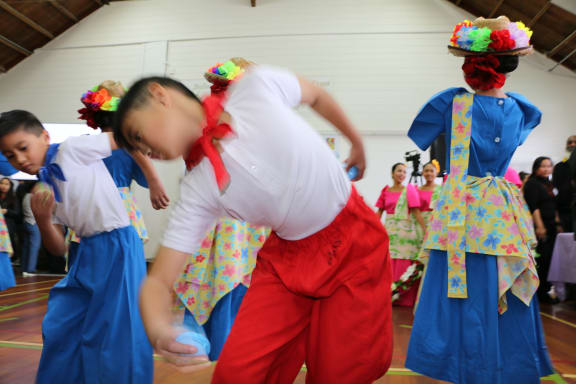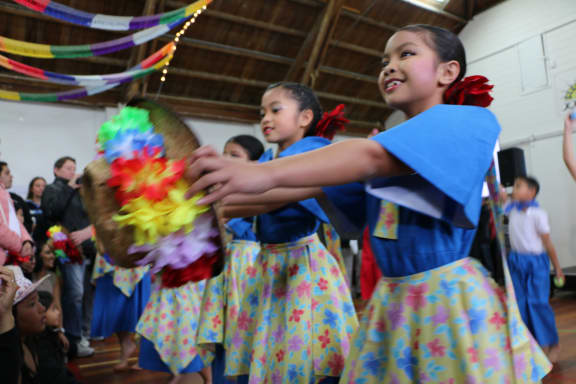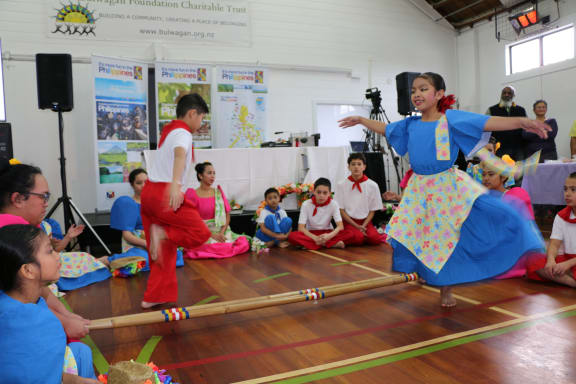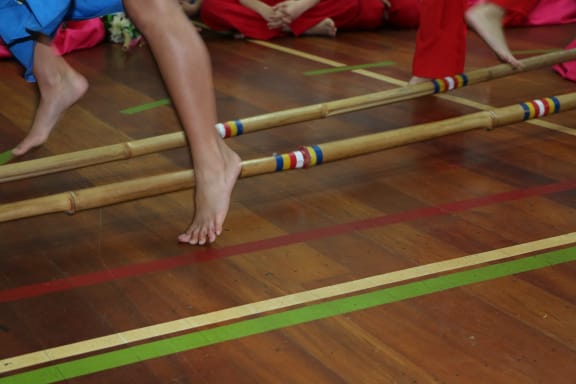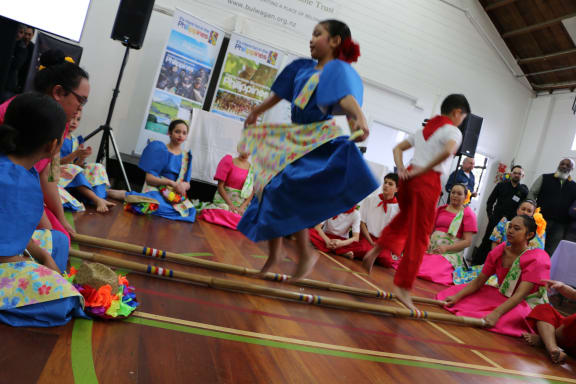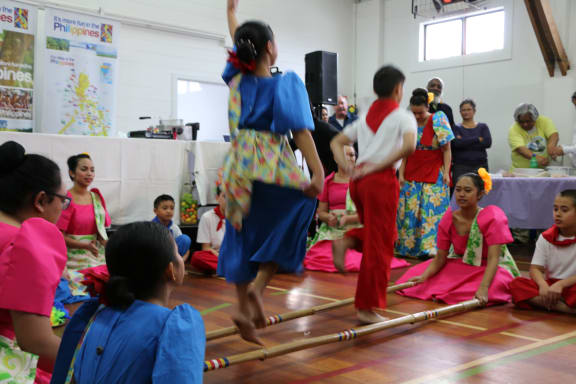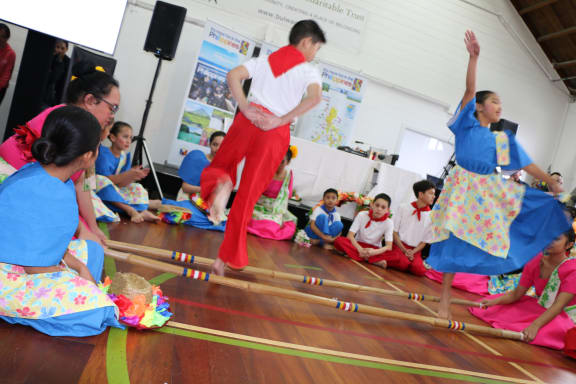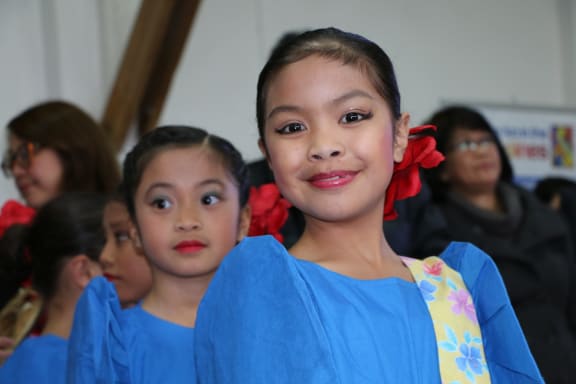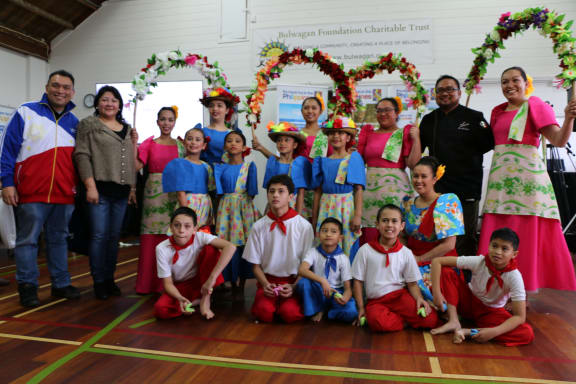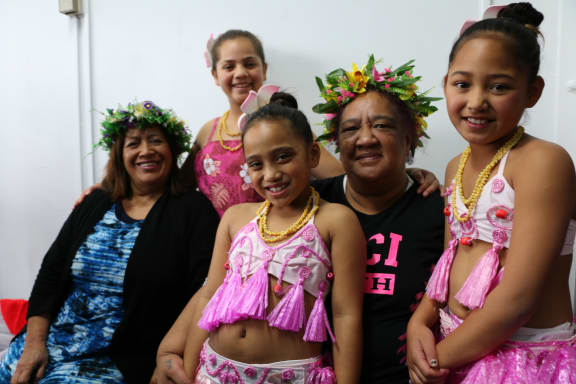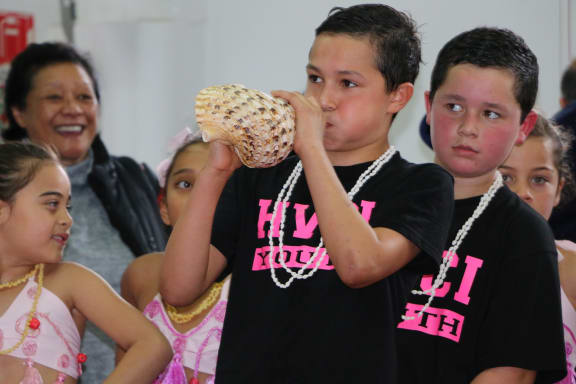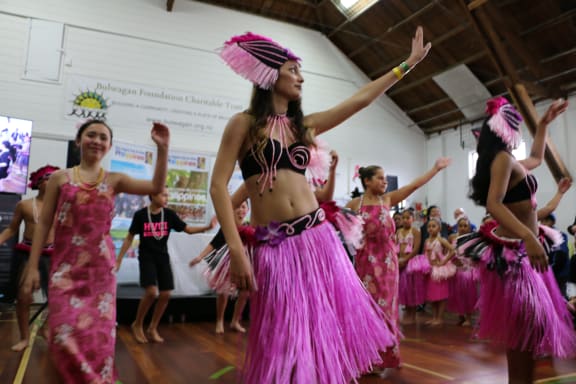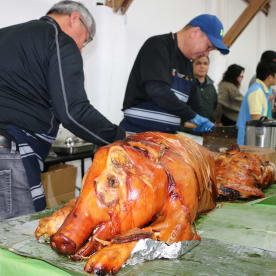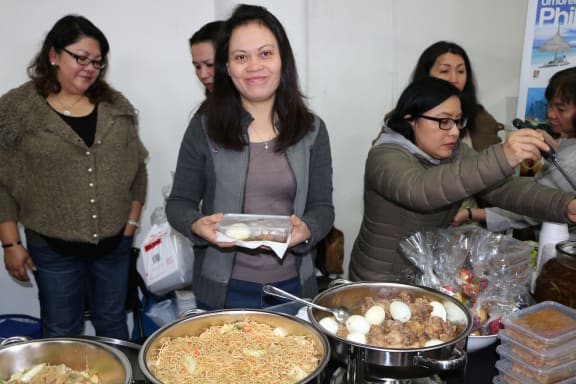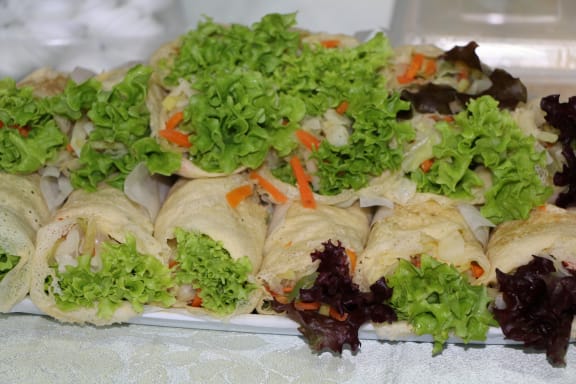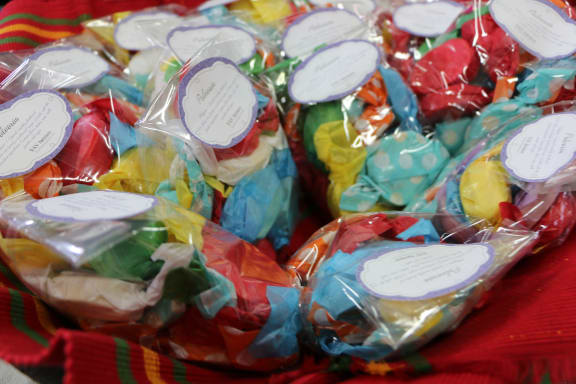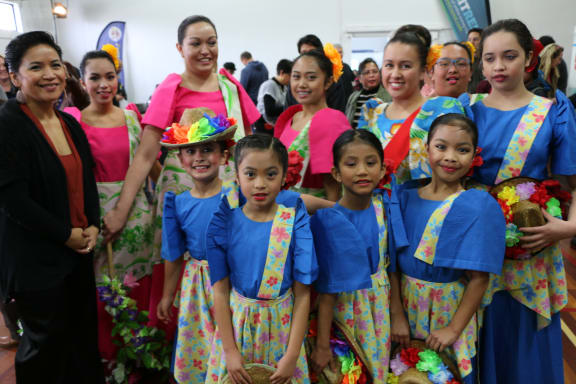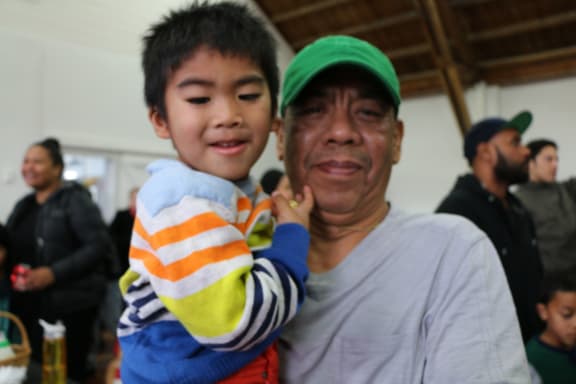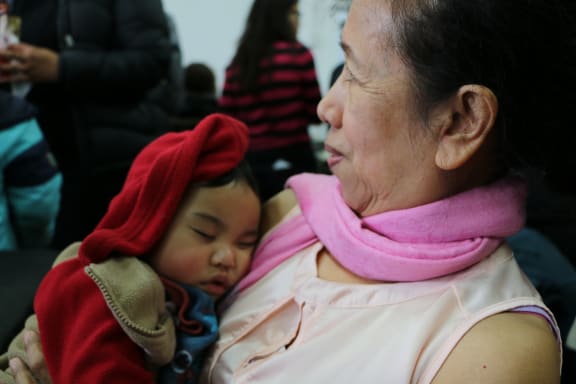His Excellency, Jesus S. Domingo, the Philippines ambassador to NZ, weaves his way through the food stalls, as if led by his nose. He stops in front of an entire spit-roasted pig and – the perfect guide around the "Taste of Home" Philippine Festival – and explains that no part of the animal will be wasted.
"Lechon is the name for spit roasted food, normally whole pig but for our Muslim brothers and sisters it would be whole chicken. Sisig (beef tripe) is peanut sauce based stew, made with ox tripe and traditionally served with beer."
Celebrating 50 years of NZ and Philippines diplomatic relations, the new Filipino Community Centre in Petone, Wellington is buzzing with families. To celebrate all that is "delicious and diverse in Filipino food" this year the Wellington Bulwagan Foundation Trust have brought the best in home-cooking, both regionally and nationally known dishes to a hungry public.
Filipino food has always been synonymous with comfort. Whether its because you grew up with it, or whether it's reminiscent of your own culture. The fusion of flavours, influenced by our diverse history is what makes Filipino food a cuisine in its own.
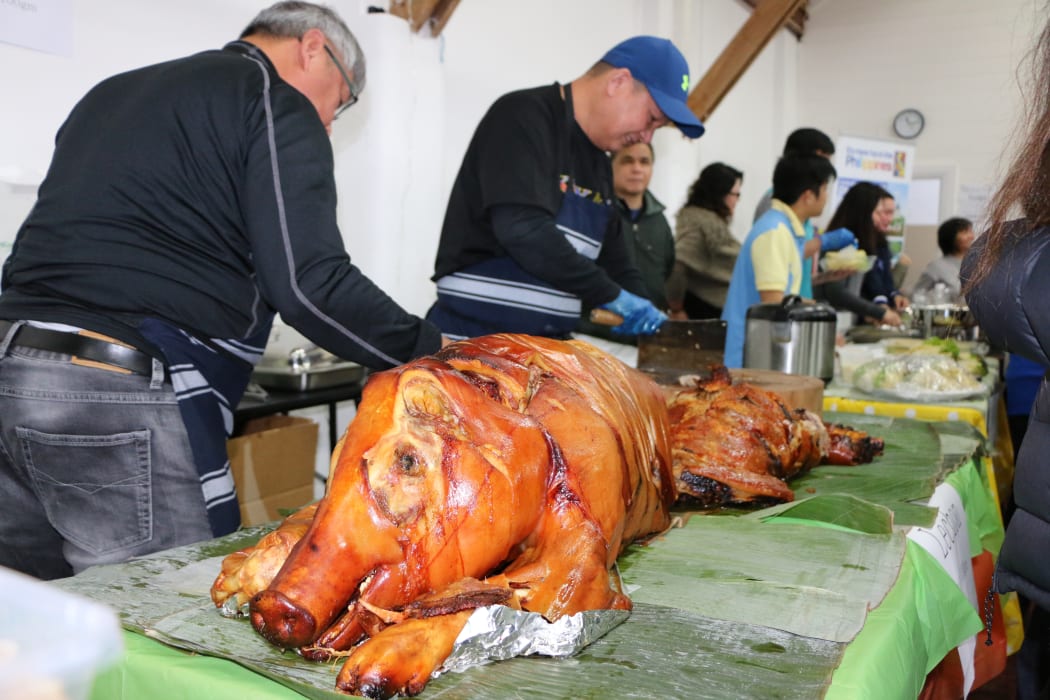
Lechon - whole spit roast Photo: RNZ / Lynda Chanwai-Earle
“It's a festival of food [today],” says Domingo “but if you had to summarize our history - we joke that we spent four decades in a Spanish convent and four decades in Hollywood! But we also have Muslim influences in our culture and the Spanish influence can be seen in the dances and traditional dresses."
Domingo says that their annual festival is the best way to celebrate all that is Filippino; "When Magellin circumnavigated the globe he came across the Philippines. We are very much the first globalised country, our culture is a mix of East and West but our base culture is Malayo-Polynesian and we share DNA with the Polynesian gene pool."
John the stall-holder tells us that the whole pork head is boiled and then minced and deep fried with vinegar and spices. Famous in the province of Bicol where Trust member and Kiwi-Noys (Kiwi-Filipino) Dinna O'Meara and her friend Ric Robrigardo hail from is laing. This incredibly popular dish is made with shredded taro leaves, pork, coconut milk, pickled shrimp paste and served with rice. Ric has slow cooked his laing for three hours. It's delicious, aromatic and one of the first dishes to sell-out.
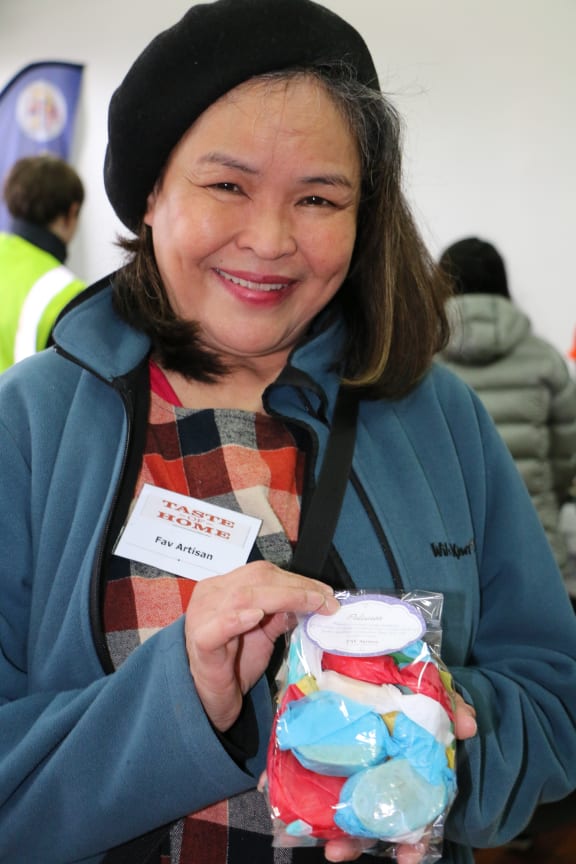
Flora Nogay with her Fav Artisan sweet stall Photo: RNZ / Lynda Chanwai-Earle
Not far from Ric's stall is the Fav Artisan sweet stall run by Flora Nogoy. She's selling traditional Polvorones - Spanish short-bread cookies typically made from a powdered milk and butter.
Around 40,000 Filipinos make up 1% of New Zealand’s population, the third largest Asian migrant group after the Indians and Chinese. Around 5,100 live in Wellington region and they’ve gathered to raise the profile of their community with a special festival featuring the Filifest Kids indigenous dance group for children, traditional food stalls and of course their very own national celebrity – Chef Leo Fernandez.
As Dinna and emcee Rocky Dunmire organise the festival line-up, Chef Leo Fernandez prepares for his ‘great taste of home’, regional and national food culinary showcase. Leo Fernandez is New Zealand Masterchef 2015 Runner-Up and the Kiwi-Noys ambassador of Filipino food.
Leo's three classic Filipino recipes include the Mindanao Buntaa (soft shelled crab dish), KBL (Kadyos, Baboy, Langand; crispy pork belly and consummé) paying homage to his mother's Visayan heritage and finally sweet Tinupig con biko (glutinous rice cake) from Laoac, Northern Philippines.
Dinna says the Trust (operating since 1999) along with their new centre, is vital to the community. "We want to showcase our culture to the wider community, so they get to know who we are. We all love to sing, dance and eat!"
When asked what the quintessential Filipino dish would be, Dinna answers emphatically."It's got to be adobo!"
From the Spanish adobar or "marinade" - the seasoning of vinegar, soy sauce, garlic, and bay leaves involves meat, seafood, or vegetables that are marinated, browned in oil, and then simmered or slow cooked in the marinade.
"It's the unofficial national dish, we even have festivals across the Philippines to honour adobo."
But wait, there's more! We love to dance too!
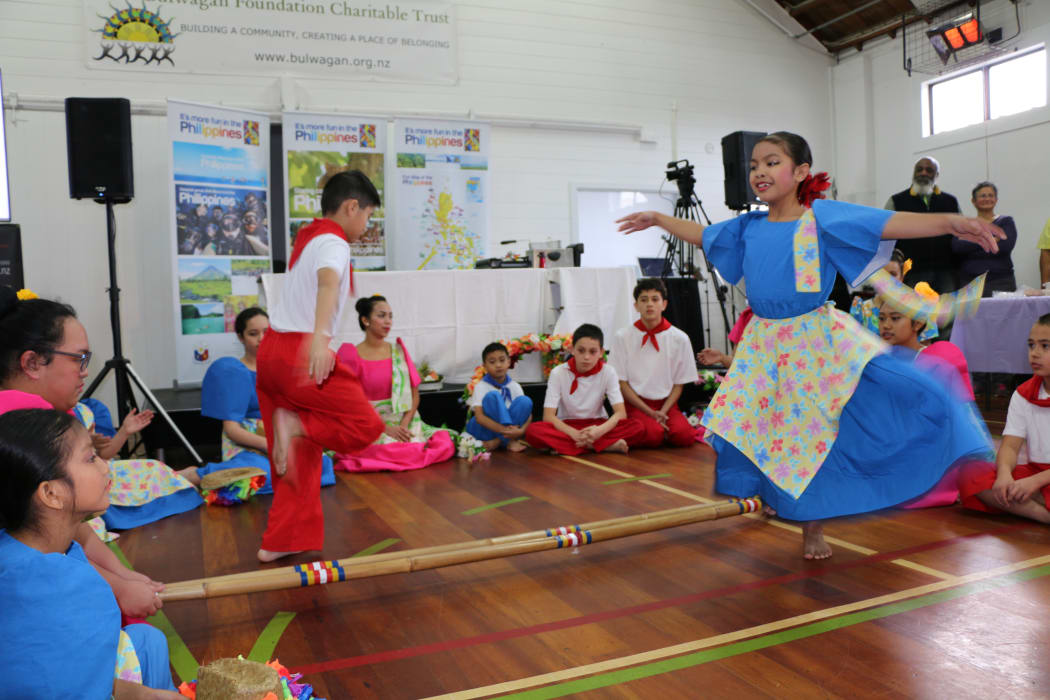
Filifest Dance Group, 10 year old Ella and Miguel perform Tinikling Photo: RNZ / Lynda Chanwai-Earle
Backstage around 15 excited children change into traditional costumes reminiscent of Spanish influence. Melissa Walker is half Filippino, half Pakeha. "I can't speak my heritage language but I can dance it." She's one of the senior tutors in the Filifest Dance Group, her mother Anita is the president and founder. "We bring Flipino culture and share it with young and old." If adobo is their quintessential dish then Tinikling is their quintessential dance.
Melissa tells me that the dance celebrates the Tinikling birds escaping the bamboo traps set by farmers. This traditional dance originated during the Spanish Colonial era and involves two people beating and sliding bamboo poles on the ground while one or more dancers step between the poles. Tinikling is traditionally performed to rondalla music, an ensemble of stringed instruments that originated in Spain during the middle ages.
Surrounded by a delighted crowd Tinikling is performed with dazzling virtuosity by two ten-year-old members of Filifest, Ella and Miguel.
Judging by the emptied food stalls and happily exhausted children at the festival's conclusion, it's celebration well worth waiting another year for.
